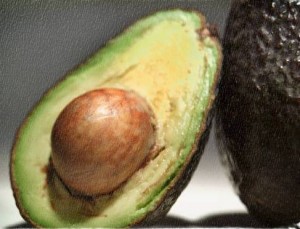NSU Newsroom
SharkBytes
Horizons
This version of NSU News has been archived as of February 28, 2019. To search through archived articles, visit nova.edu/search. To access the new version of NSU News, visit news.nova.edu.
This version of SharkBytes has been archived as of February 28, 2019. To search through archived articles, visit nova.edu/search. To access the new version of SharkBytes, visit sharkbytes.nova.edu.
Check out the Amazing Avocado
Submitted by Marilyn Gordon, Ed.D., RD, CSSD, LDN
Registered Dietitian, Certified Specialist in Sports Dietetics, Licensed Dietitian/Nutritionist
 Once shunned due to the popularity of low fat and fat free diets, the avocado has made a comeback and deserves to be appreciated for the super fruit that it is. The predominant fatty acid is monounsaturated. This fat is popular in Mediterranean diets and known to improve the lipid profile by lowering the LDL (lousy) cholesterol while maintaining healthy levels of the HDL cholesterol. This promotes a healthy cardiovascular system.
Once shunned due to the popularity of low fat and fat free diets, the avocado has made a comeback and deserves to be appreciated for the super fruit that it is. The predominant fatty acid is monounsaturated. This fat is popular in Mediterranean diets and known to improve the lipid profile by lowering the LDL (lousy) cholesterol while maintaining healthy levels of the HDL cholesterol. This promotes a healthy cardiovascular system.
Fat is needed in the diet to carry and absorb fat soluble vitamins, phytochemicals, and carotenoids. Fat provides a smooth mouth feel and enhances satiety. One Florida avocado will yield approximately 2 cups of fruit once it is peeled and removed from the heavy seed.
The 2 cups provides:
- 485 calories
- 26 grams carbohydrate
- 40 grams fat (55% monounsaturated)
- 6 grams protein
- 20 grams fiber
Additional nutrients provided are folic acid and potassium; both famous for reducing the risk of heart disease. Vitamins A, C, and E are abundant and all 3 are powerful antioxidants, reducing free radical damage and our risk of cancer, heart disease, and immune system disorders.
A ripe avocado is delicious with a squirt of lemon juice and black pepper. Most people have only eaten avocado as the main ingredient in Guacamole but since it is versatile, it can be added to a smoothie to produce a creamy drink, sliced as an addition to a sandwich, or mashed and used as a substitute for mayonnaise.